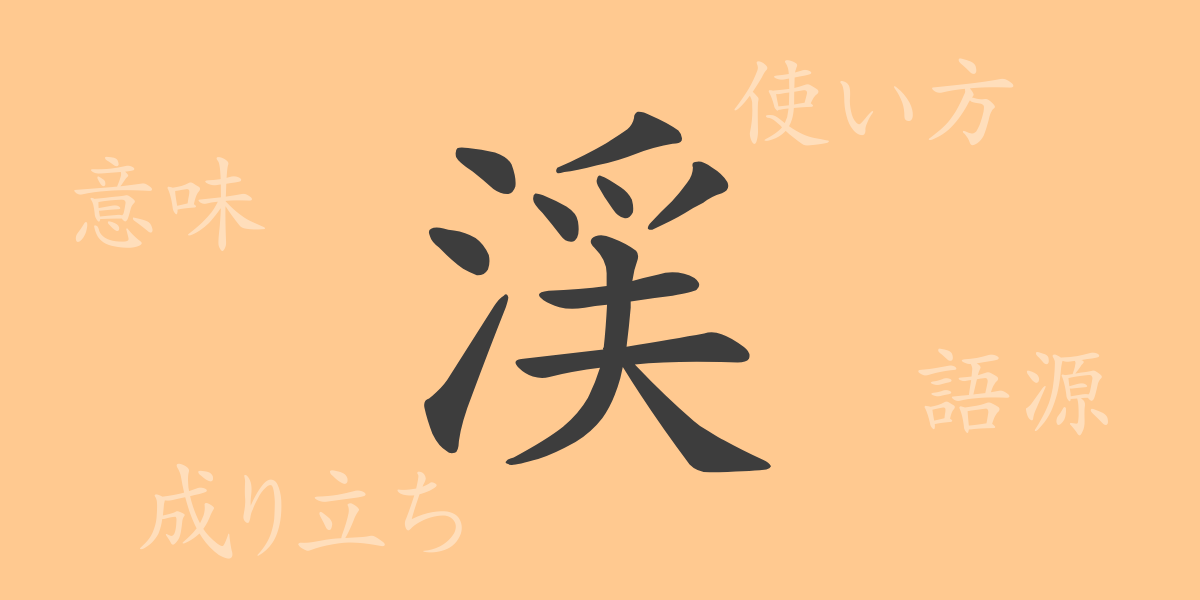Japan’s four seasons bring various beautiful landscapes, and the murmuring of mountain streams (渓流 (けいりゅう)) is especially beloved by many. This article spotlights the kanji “渓 (けい)” that represents these streams and explores its charm. From its etymology and meaning to its usage and related compounds, let’s delve into the profound world of this character.
Origin of 渓 (けい) (Etymology)
The kanji “渓 (けい)” symbolizes small rivers or streams flowing through mountains. It was created in ancient China to represent the natural scenery of mountains combined with water. The character combines “山 (やま),” meaning mountain, with “氵 (さんずい),” indicating flowing water, thus depicting the image of water flowing through mountainous areas.
Meanings and Uses of 渓 (けい)
The kanji “渓 (けい)” means “mountain stream” or “valley stream.” It is often used in poetry and literary works to convey the beauty and emotion of mountain streams. Additionally, it can be used metaphorically to describe the journey of life or the flow of history, comparing them to the meandering streams through valleys.
Readings, Stroke Count, and Radical of 渓 (けい)
The kanji “渓 (けい)” is a common character in Japanese, taught thoroughly in school education.
- Readings: The on’yomi (Chinese reading) is “ケイ (けい),” and the kun’yomi (Japanese reading) is “たに (tani).”
- Stroke count: It consists of 11 strokes.
- Radical: The radical is “氵 (さんずい),” which represents water.
Idioms, Expressions, and Proverbs Using 渓 (けい)
Compounds and idioms that include “渓 (けい)” are often used to symbolize the depth of nature and life. For example, “渓谷 (けいこく)” refers to a deep valley, and “渓流 (けいりゅう)” indicates a small river flowing through mountains. Additionally, “渓声 (けいせい)” describes the sound of a murmuring stream, evoking the beauty of natural sounds.
Conclusion on 渓 (けい)
The kanji “渓 (けい)” encapsulates the beauty of nature and its profound meanings within a single character. It encourages us to reflect on the richness of nature and the flow of life. When writing essays or poems, choosing such kanji can deeply resonate with readers. We should continue to cherish the rich imagery that “渓 (けい)” holds.

























